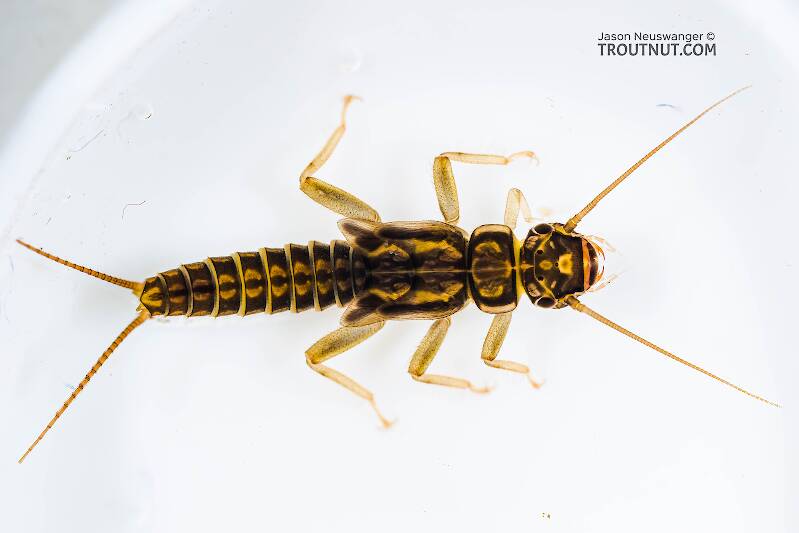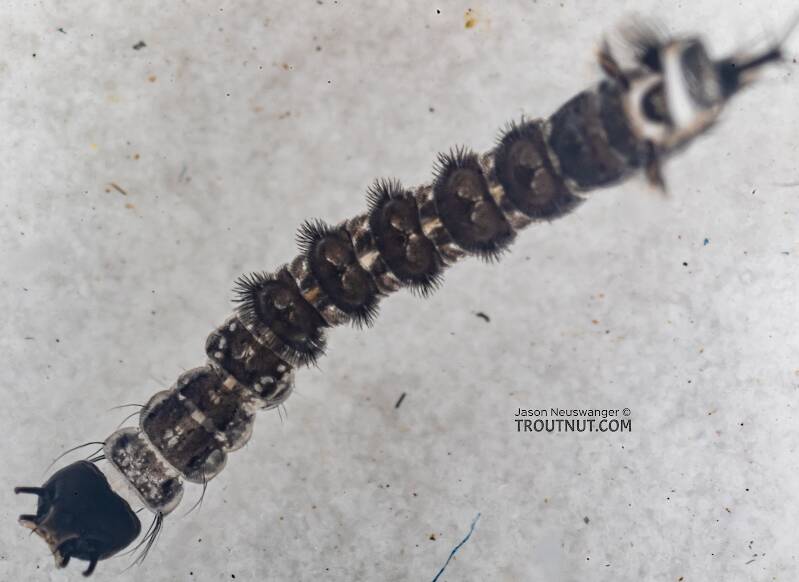
Blue-winged Olives
Baetis
Tiny Baetis mayflies are perhaps the most commonly encountered and imitated by anglers on all American trout streams due to their great abundance, widespread distribution, and trout-friendly emergence habits.
Featured on the forum


Troutnut is a project started in 2003 by salmonid ecologist Jason "Troutnut" Neuswanger to help anglers and
fly tyers unabashedly embrace the entomological side of the sport. Learn more about Troutnut or
support the project for an enhanced experience here.
Creno on Aug 7, 2019August 7th, 2019, 3:54 pm EDT
I checked with Greg Courtney and this appears to be a Dixa larva.
Jmd123 on Aug 8, 2019August 8th, 2019, 6:45 am EDT
Did it look like it had a "broken neck"? I always remember that as an easy ID character for Dixiids.
Jonathon
Jonathon
No matter how big the one you just caught is, there's always a bigger one out there somewhere...



